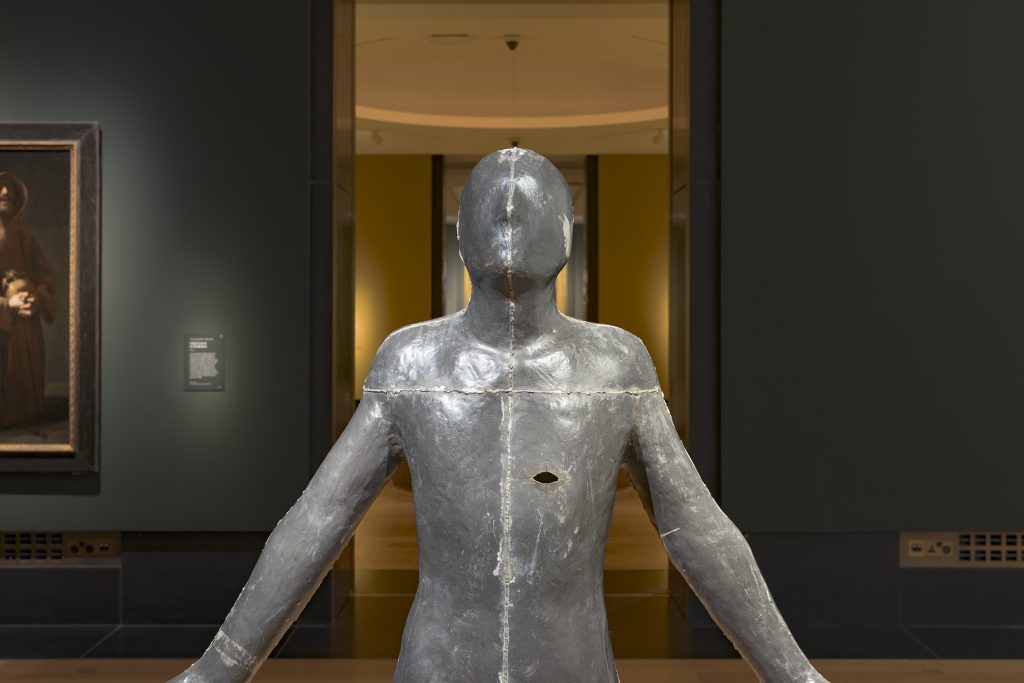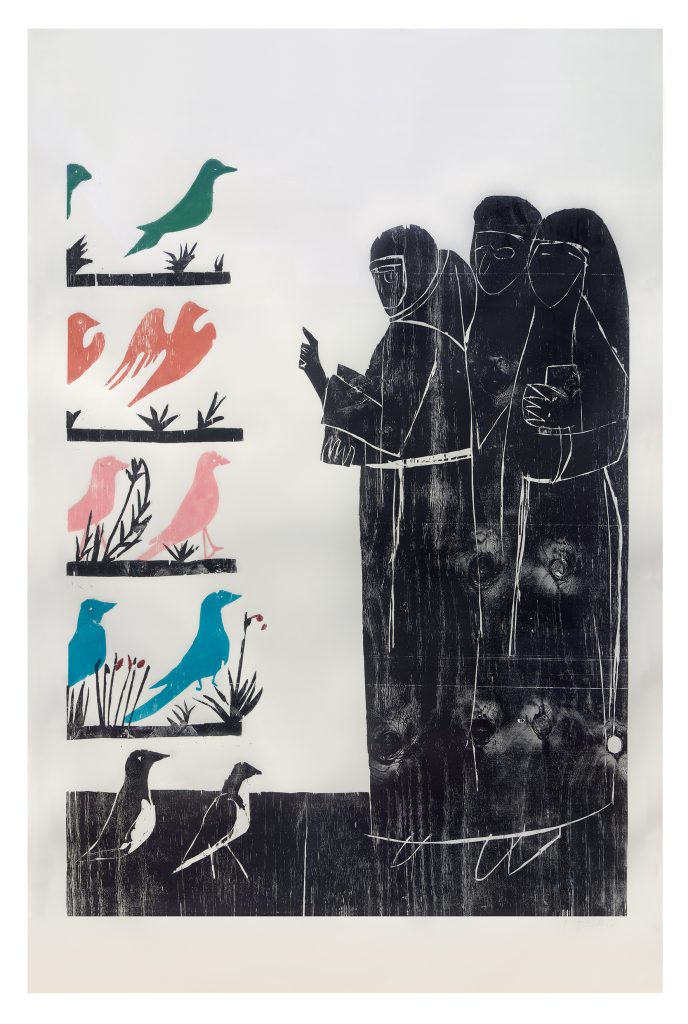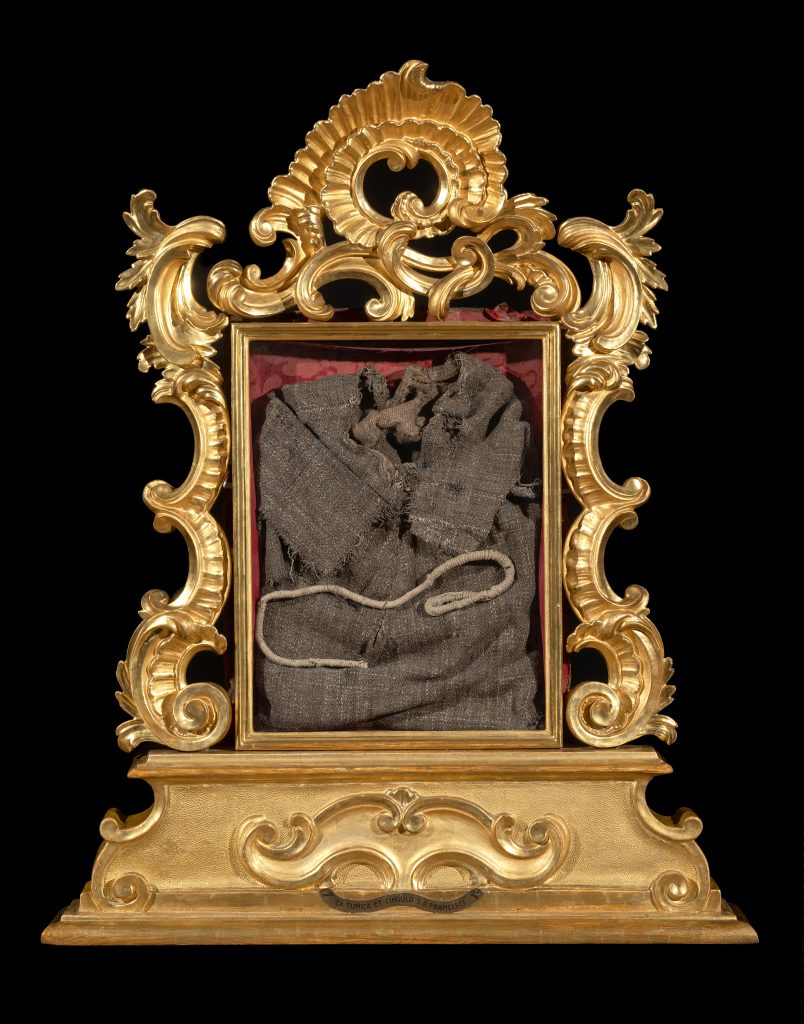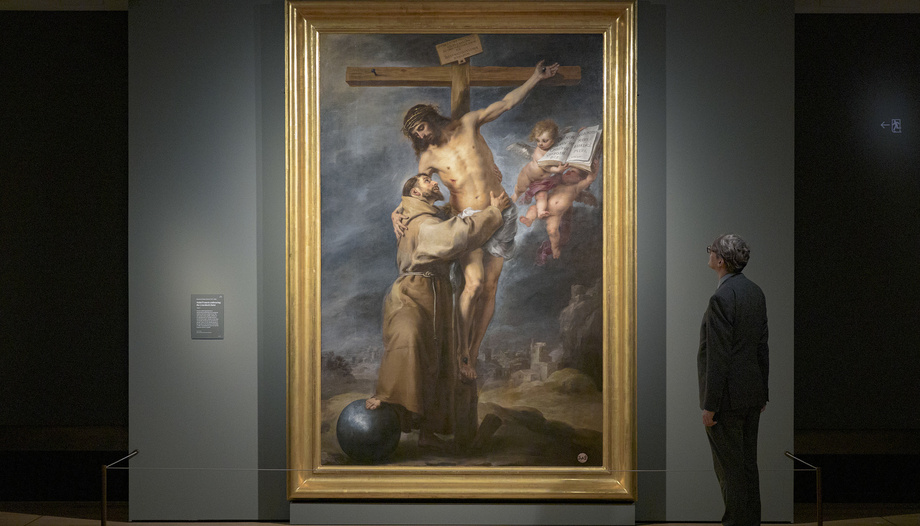Located in the the basement of the National Gallery's main building, a remarkable exhibition unfolds. To reach this captivating display of artworks the visitor has to follow a series of vaulted corridors and go across the coffee shop before reaching the exhibition. While this path may seem unassuming, in line with the simplicity of life of the saint in question, it leads to the display of over 40 works of art dedicated to Saint Francis of Assisi, spanning more than seven centuries.
The exhibition
Once there, the first thing that catches the eye are the outstretched arms of Gormley's 1985 "Untitled (for Francis)" body cast, which greet the visitor; an invitation to shed any worldly concerns and focus on the timeless message of St. Francis.

Gormley, influenced by his father's devotion to the saint, was inspired by Giovanni Bellini's "St. Francis in the Desert" (ca. 1476-1478), where the saint appears as an ascetic living in the desert, in line with contemporary representations during the Renaissance. This is the first moment in the exhibition where medieval and modern art go hand in hand.
St. Francis of Assisi: a source of inspiration
St. Francis of Assisi was born at the end of the 12th century (around 1182), but he can be considered a modern saint because of his love of nature and animals, his commitment to the poor and his efforts to dialogue with different religions. By the time of his canonization in 1228, only two years after his death, his image and spirituality had spread throughout central Italy, and soon throughout Europe. This figure has influenced artists throughout the centuries; the works of art created to convey his spirituality and life are difficult to list and reflect a wide variety of artistic styles and media.
This profusion of representations did not escape the keen eye of Dr. Gabriele Finaldi, director of the National Gallery. Finaldi likes to wander through the galleries to focus on what he has under his direction: the collection. It is one of the ways he gets inspiration both for curating an exhibition and for redistributing the paintings in a room: under his tenure as Deputy Director of the Prado Museum, the collection was very successfully redistributed, bringing some hidden gems from the lower rooms to the main levels and reshaping the reading of the artworks. It was during one of his morning walks through the National Gallery that he began to count how many paintings of the saint were in the Sainsbury wing; he counted 18 in a few minutes.
Evolution of representations
St. Francis stands comfortably both in the past and in our world today because of his spiritual radicalism, his commitment to the poor and his love of God and nature. He posed a radical challenge that still strikes a chord today. The passage from the static two-dimensional representations of the saint of medieval times to the realistic and dramatic images of the 16th century, together with modern approaches to his figure, can be traced in this exhibition, unusually devoted to a single figure (Finaldi's "The Image of Christ" exhibition at the National Gallery in 2000 is a superb example of similar characteristics).
The exhibition explores how the saint has been perceived and represented and how he has remained relevant. He is an inspirational figure for those who fight for the environment, animals, peace, social justice and solidarity, regardless of whether one is a Christian or not. Pope Francis took his pontifical name from this saint, and considers his message to be extraordinarily timely. The recurring words of St. Francis of Assisi's "Canticle of the Sun," repeating "Laudato si'" ("Praise be to you"), were used by Pope Francis in 2015 as the title of his second encyclicalin which he called for radical change to address environmental degradation and climate change in order to preserve our "common home," underscoring the enduring power and potential of the saint.
The 800-year journey summarized in the exhibition begins with scenes from the life of St. Francis beautifully narrated by the Sassetta panels (National Gallery collection) and two early panels called "vita-retablos" from Assisi and Pistoia, painted shortly after his death, which are rich in detail and inspired by already well-established models (see the healing of the crippled man).
The journey continues to explore the mystical St. Francis and his love for the natural world. From the descriptive paintings of the early Renaissance, and once the Franciscan order was firmly established in Europe, artists such as Zurbarán, Murillo, Caravaggio, El Greco or Ribalta, to name a few, focused more on the transcendental experience of the saint and followed in the footsteps of the Council of Trent (1545-1563), depicting St. Francis of Assisi as a Counter-Reformation Francis, emphasizing his miraculous experiences. These mystical paintings go beyond biographical accounts to combine transcendental experience with devotional intensity.
Saint Francis of Zurbarán
Especially moving is Zurbarán's "St. Francis in Meditation" (1635-1639). Zurbarán painted the saint more than fifteen times throughout his career. This life-size canvas shows the saint physically present, but spiritually elsewhere, with his mouth open and hands clasped in prayer, holding a skull. The patched burlap habit is rendered with extraordinary skill. The pointed hood and the belt with the three knots, representing the three vows of poverty, chastity and obedience, were typical of Capuchin friars.
This painting links to an object exhibited in another room, where the viewer can contemplate and pray with it, which is a remarkable relic loaned by the Basilica of Santa Croce in Florence: the habit of St. Francis. It is believed that this habit of wool and hemp belt was worn by Francis himself. The roughness of the fabric is probably very different from what the saint may have worn before his spiritual journey; he was the son of a wealthy cloth merchant and was probably familiar with fabrics such as silk. This holy relic, once inhabited by the saint, made a deep impression on Gormley when he saw it in Assisi. His "Untitled" which opens the exhibition was also inhabited by Gormley, just as St. Francis' tunic once carried his body and spirit.
Murillo
This detachment from the world is manifested in Murillo's powerful depiction of "St. Francis Embracing Christ Crucified", 1668-1669, on loan from the Museo de Bellas Artes in Seville. This monumental painting shows the saint tenderly embracing the crucified Christ, who wraps the saint in an endearing embrace, both figures gazing at each other. St. Francis' foot holds a globe, emblem of the secular concerns he has repudiated. Standing on the globe may have helped the saint to be closer to Christ; the world itself is a way of getting closer to God, to his beauty, to his creatures, to human beings made in the image of Christ. St. Francis contemplated the natural world and its creatures and saw the goodness of God in everything. It was part of the novelty of his preaching, a message that remains powerful: we can find God also in our daily lives.
Spencer and Büttner

Modern artworks by Stanley Spencer and Andrea Büttner reflect St. Francis of Assisi's deep connection to animals, pointing to him as the patron saint of animals and ecology. Once again, the influence of the past serves as inspiration for a modern work. "Vogelpredigt" ("Sermon to the Birds"), 2010, by Büttner, pays homage to the altarpiece "St. Francis and Twenty Episodes of His Life" (Basilica of Santa Croce, Florence, ca. 1250), using an ancient technique, woodcut. The scene depicted is described in the "First Life" of Thomas Celano (1228-1229), in which the saint addresses the birds and advises them to praise the Creator at all times.
The original painted in the 13th century was richly gilded and expensive materials were used to convey the spiritual meaning. Büttner uses a cheaper technique, woodcut on paper, in keeping with the poverty that dominated the life of St. Francis. In this room, the sounds of birds chirping can be heard in the background, which makes the contemplation of the paintings more immersive in the natural world, creating a sense of peace and tranquility.
Stanley Spencer shows the saint in a very different way. "St. Francis and the Birds," 1935, may be considered a bit eccentric; in fact, when it was first exhibited at the Royal Academy of Arts Summer Exhibition, it was rejected as a distortion of the saint. The author responded that this depiction had arisen from a sincere appreciation for the saint, and that the bulky figure signifies the wide dissemination of St. Francis' teachings. The figure, a bearded man inspired by the painter's father, leads a group of chickens and ducks, which seem to copy the saint in his praises to God.
St. Francis, a saint of today
The National Gallery's exhibition of art about St. Francis, featuring a diverse range of works from the museum's own collection and impressive loans, is an important contribution to the contemporary representation of St. Francis. The exhibition highlights the enduring relevance of St. Francis in the present century. He continues to captivate and inspire believers and non-believers alike by his renunciation of wealth and possessions, his humility, his devotion to the poor, and his deep love of nature and animals. St. Francis of Assisi saw in all of them the image of God and his tender love for all creatures. And so can we.

Art historian








